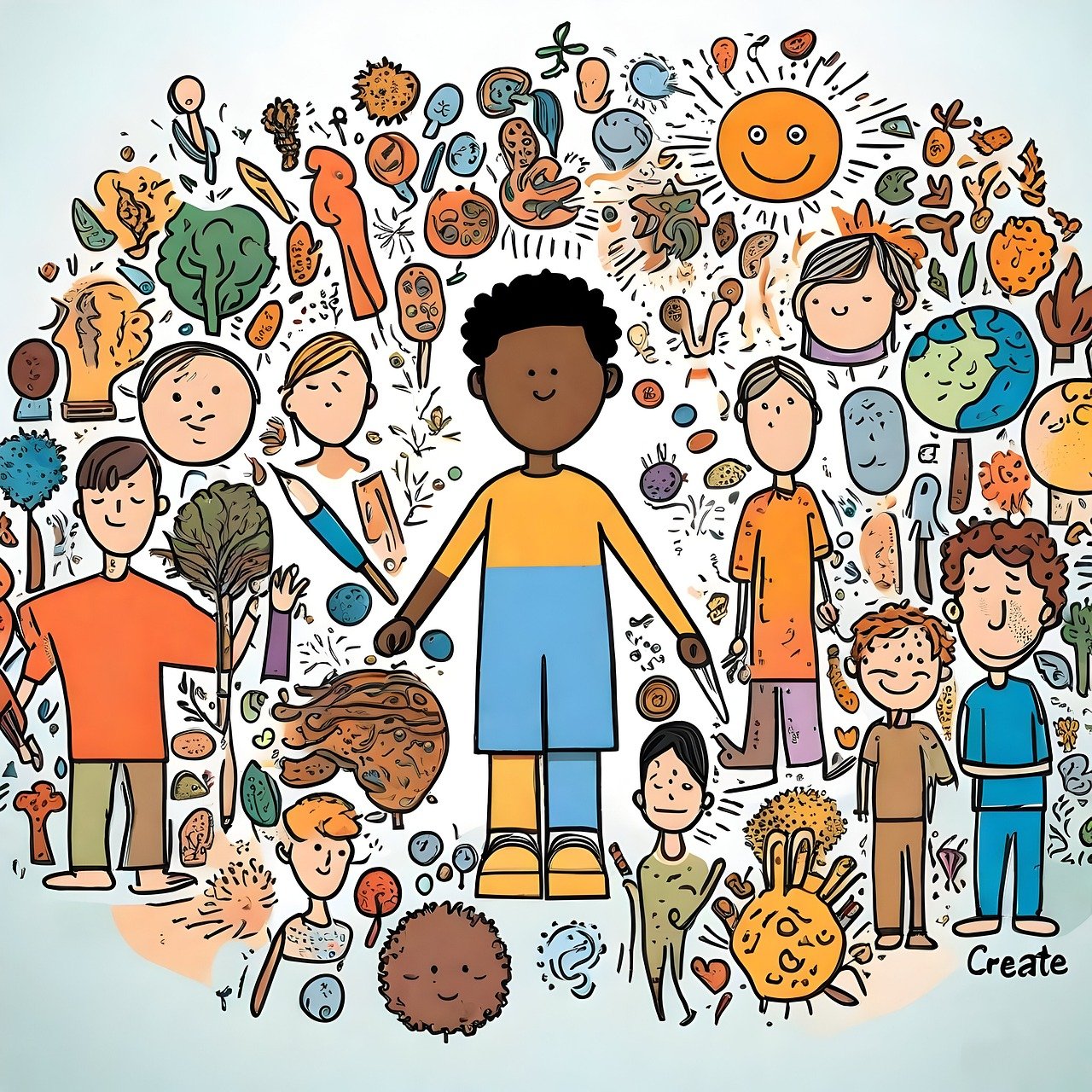Global Trends Meet Corporate Accountability: My Insights on ESRS Cross-Cutting Requirements
Introduction:
In an era where global sustainability trends are increasingly influencing corporate accountability, the European Sustainability Reporting Standards (ESRS) have emerged as a pivotal framework. The Cross-Cutting Requirements within these standards represent a significant stride towards harmonizing sustainability reporting across borders. As someone navigating the intersection of global trends and corporate responsibility, my journey through these requirements has been enlightening and challenging. This blog post shares my experiences and the broader implications for corporations striving to align with global sustainability trends.
The Global Call for Transparency:
The rollout of the ESRS Cross-Cutting Requirements resonated with the global call for enhanced transparency and accountability in corporate sustainability practices. It presented an opportunity for our organization to not only align with European standards but also to set a benchmark in global corporate sustainability reporting.
Navigating the ESRS Landscape:
Understanding the Global Context: The first step in our journey was to contextualize the ESRS Cross-Cutting Requirements within the broader global sustainability trends. This understanding was crucial for developing a reporting strategy that was not only compliant but also reflective of global sustainability goals.
Forming a Global Task Force: To tackle the complexities of the ESRS, I assembled a task force with global representation. This team's diverse international perspective was instrumental in ensuring our approach to the ESRS was globally informed and locally applicable.
Data Collection with a Global Lens: One of the core challenges under the ESRS is the collection of sustainability data that is both comprehensive and globally relevant. We adopted innovative data collection methodologies that allowed us to capture sustainability data reflective of our global operations.
Engaging Global Stakeholders: A key strategy in our approach was the engagement of stakeholders across our global footprint. This engagement ensured that our sustainability reports were not only ESRS-compliant but also resonant with our global stakeholders' expectations and the broader sustainability trends.
Leveraging Global Educational Initiatives: Recognizing the importance of global awareness and understanding of the ESRS standards, we launched educational initiatives across our organization. These programs were designed to empower our global team, fostering a culture of sustainability that transcends borders.
Integrating Global Trends into Reporting: The Cross-Cutting Requirements encouraged us to integrate global sustainability trends into our corporate reporting. This integration ensured that our reports were not only aligned with the ESRS but also with the evolving global sustainability landscape.
Crafting a Globally Resonant Narrative: Reporting under the ESRS framework became an opportunity to articulate our commitment to global sustainability. We focused on creating a narrative that was transparent, engaging, and reflective of our global sustainability efforts and achievements.
Seeking External Assurance for Global Credibility: To enhance the credibility of our reports on a global scale, we pursued external assurance. This step was crucial in demonstrating our commitment to the ESRS standards and our alignment with global sustainability trends.
Implications for Global Corporate Sustainability:
Navigating the ESRS Cross-Cutting Requirements has underscored the importance of aligning corporate sustainability reporting with global trends and standards. It has highlighted the role of corporations in driving global sustainability efforts through transparent and accountable reporting.
For Corporations at the Crossroads of Global Trends:
For corporations seeking to navigate the intersection of global sustainability trends and corporate accountability, the ESRS Cross-Cutting Requirements offer a unique opportunity to lead in sustainability reporting. Embrace these standards as a means to enhance your global sustainability practices and reporting, setting a benchmark in corporate accountability.
For a comprehensive guide to navigating these requirements and aligning with global sustainability trends, I highly recommend visiting: https://socious.io/blog/esrs-cross-cutting-requirements. This resource has been instrumental in guiding our approach, providing clarity and actionable insights for embracing the ESRS within the global sustainability framework.
Conclusion:
My journey through the ESRS Cross-Cutting Requirements has been a testament to the evolving relationship between global sustainability trends and corporate accountability. As we continue to adapt and evolve our reporting practices, let us do so with a commitment to global sustainability, transparency, and the pursuit of a more accountable corporate world.
Innovating Towards Transparency: My Journey with the SEC’s Climate Disclosures
Introduction:
In the dynamic intersection of innovation and environmental stewardship, the Securities and Exchange Commission’s (SEC) climate-related disclosure requirements have emerged as a catalyst for change. As an innovator at the heart of a forward-thinking organization, these mandates propelled me on a journey not just of compliance, but of transformation. This article delves into my experiences, shedding light on how innovation can drive meaningful environmental disclosure and impact.
The Innovation Imperative:
The SEC’s announcement was more than a regulatory update; it was an invitation to innovate. In the face of these new requirements, I saw an opportunity to leverage innovation not only to meet compliance standards but to redefine our approach to environmental impact and reporting.
Embarking on the Innovation Journey:
Unpacking the Mandates: The journey began with a deep dive into the SEC’s disclosure requirements. Understanding the nuances of these mandates was crucial, as it informed our innovative approach to compliance, ensuring that our strategies were both effective and aligned with regulatory expectations.
Assembling a Diverse Team: Innovation thrives on diversity, so I gathered a multidisciplinary team from across our organization. This team brought together expertise from sustainability, technology, finance, and operations, creating a melting pot of ideas that would fuel our innovative approach to climate disclosures.
Revolutionizing Data Collection: Central to our compliance efforts was the challenge of data collection and management. We leveraged cutting-edge technologies and processes to capture accurate and comprehensive environmental data, turning a compliance necessity into an opportunity for innovation in data management.
Stakeholder Collaboration: Engaging with stakeholders was a pivotal part of our journey. Through collaborative workshops and forums, we harnessed the collective insights of investors, customers, and community partners, integrating their perspectives into our innovative disclosure strategies.
Cultivating a Culture of Learning: Recognizing the power of knowledge, we launched educational initiatives focused on the SEC’s requirements and the role of innovation in sustainability. These programs empowered our team, fostering a culture of continuous learning and innovation.
Integrating Sustainability and Strategy: Our approach to climate-related risks and opportunities was grounded in strategic innovation. By embedding sustainability considerations into our corporate strategy, we ensured that our climate disclosures reflected not just compliance, but our commitment to environmental innovation.
Crafting a Narrative of Innovation: Writing our climate disclosures became an exercise in storytelling. This narrative highlighted our innovative approaches to sustainability, showcasing how we were leveraging technology and creativity to reduce our environmental footprint and enhance transparency.
Seeking External Validation: To bolster the credibility of our disclosures, we pursued third-party verification. This step not only validated our innovative practices but also underscored our commitment to transparency and accountability in our environmental reporting.
Innovating Beyond Compliance:
This journey through the SEC’s climate disclosure requirements has been a testament to the role of innovation in driving environmental transparency and impact. It has challenged us to think creatively, act boldly, and lead with innovation in our pursuit of sustainability.
A Call to Innovators:
For those at the intersection of innovation and environmental stewardship, the SEC’s mandates offer a unique opportunity to catalyze change. Embrace these requirements as a chance to innovate, to transform challenges into opportunities for impact, and to lead the way in sustainable business practices.
For a deeper dive into navigating these mandates with an innovative lens, I highly recommend exploring this comprehensive guide: https://socious.io/blog/sec-climate-disclosures-compliance-guide-10-steps. It has been an invaluable resource in guiding our innovative approach to climate-related disclosures.
Conclusion:
Navigating the SEC’s climate disclosure mandates has reaffirmed my belief in the transformative power of innovation. As we continue to forge ahead, let us leverage our creativity and ingenuity to not only meet regulatory expectations but to drive meaningful change in our environmental impact and sustainability practices.
Innovating for Impact: The Role of Blockchain and AI in Driving Ethical Philanthropy
In the ever-evolving landscape of global philanthropy, the advent of Blockchain and Artificial Intelligence (AI) technologies stands as a pivotal turning point. At Socious, we are pioneering the integration of these technologies to redefine what's possible in the realm of ethical philanthropy and sustainable impact projects. Our vision is to harness the unparalleled capabilities of Blockchain and AI to enhance transparency, streamline efficiency, and magnify the impact of every initiative we undertake.
Blockchain: Building Trust Through Transparency
Blockchain technology is transforming the foundation of philanthropic trust. By enabling a transparent, immutable ledger of transactions, Blockchain allows for an unprecedented level of accountability. Every donation, every project, and every outcome is recorded in a way that is permanently accessible and verifiable by all stakeholders. This not only builds a bridge of trust between donors and impact projects but also sets a new standard for how philanthropic activities are conducted and reported.
AI: Smart Solutions for Sustainable Impact
Artificial Intelligence is reshaping the strategy behind sustainable impact. With its ability to analyze vast amounts of data, AI identifies the most effective approaches to tackle complex challenges. This intelligence guides the allocation of resources, ensuring that efforts are directed towards areas where they can achieve the greatest impact. AI's predictive capabilities also allow for a more personalized engagement with donors and volunteers, matching their passions and skills with the needs of impactful projects.
Socious: A Catalyst for Change
At Socious, we are more than just a platform; we are a movement towards a more ethical, transparent, and impactful form of philanthropy. By leveraging Blockchain and AI, we aim to empower individuals and organizations to make informed, effective, and meaningful contributions to the world's most pressing issues. Our commitment to innovation and impact drives us to explore new frontiers in philanthropy, where technology and human compassion converge to create lasting change.
We invite you to join us in this journey of innovation and impact. While this brief overview touches on the potential of Blockchain and AI in transforming philanthropy, there is much more to discover and achieve. To delve deeper into how these technologies are shaping the future of ethical philanthropy and to learn how you can be a part of this transformative movement, we encourage you to explore our insights and stories. Visit our blog at the Socious website for more information and to see how you can contribute to a more sustainable and equitable world. https://socious.io/blog/blockchain-ai-ethical-philanthropy-sustainable-impact-projects
Together, let's innovate for impact and pave the way for a future where technology and philanthropy unite to create a better world for all.




